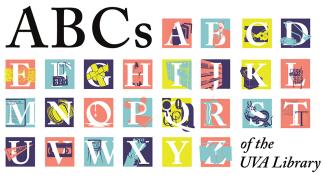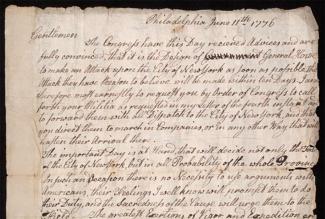 The University of Virginia Library’s exhibitions program delights and informs by showcasing the rare and unique materials available to the University’s faculty, students, and visiting researchers. Partnerships — with other institutions to bring treasures to our galleries and with guest curators to bring fresh perspectives to our collections — allow the Library to serve the UVA community as an evolving space for discovery and celebration of our shared cultural heritage.
The University of Virginia Library’s exhibitions program delights and informs by showcasing the rare and unique materials available to the University’s faculty, students, and visiting researchers. Partnerships — with other institutions to bring treasures to our galleries and with guest curators to bring fresh perspectives to our collections — allow the Library to serve the UVA community as an evolving space for discovery and celebration of our shared cultural heritage.
Explore below to learn more about the Library’s current, rotating exhibitions in the Small Special Collections Library, the permanent “Declaring Independence” exhibition in the Harrison Institute, and additional displays across the University Library and around Grounds. For those not able to visit while in Charlottesville, view the Library’s archive of online exhibitions.
Exhibitions: Current
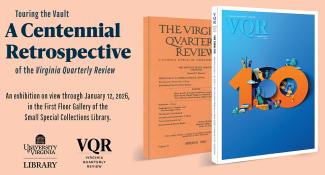
A Centennial Retrospective of the Virginia Quarterly Review.
An exhibition to showcase our rich and assorted collections, highlighting the staff who make those materials discoverable and accessible. On view in the Small Special Collections Library through June 13, 2026.
Exhibitions: Permanent
This permanent exhibit offers highlights of the Albert H. Small Declaration of Independence Collection, the most comprehensive collection of letters, documents, and early printings of the Declaration of Independence. The exhibition sheds light on not only the writing and signing of the Declaration, but also on its first printing, distribution across the colonies, and future impact on American history.
Exhibitions: Past
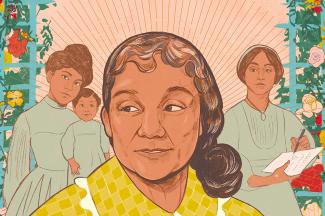
Celebrating the life and legacy of Anne Spencer — Harlem Renaissance poet; civil rights activist; librarian and educator; avid reader and prolific writer. On view through June 14, 2025 in Special Collections.
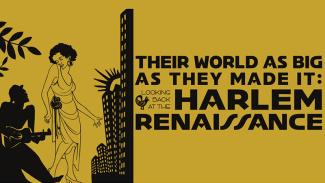
Featuring the visionary works of writers, artists, and thinkers of the Harlem Renaissance whose creative and intellectual pursuits reflected the diversity of contemporary discourses that defined Black American identity and political consciousness — and shaped the ideas and arts of a time and place that would profoundly influence future generations.
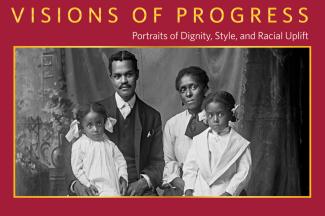
An exhibition showcasing portraits that African Americans in Central Virginia commissioned from the Holsinger Studio during the first decades of the twentieth century. The portraits expressed the individuality of the women and men who commissioned them and silently yet powerfully asserted the Black community’s claims to rights and equality.

An exhibition centering the work of UVA student and Charlottesville community racial justice activists who — despite City and University officials’ discouragement of counter-protests — organized demonstrations and events which resulted in significant anti-fascist victories during the 2017 Summer of Hate.
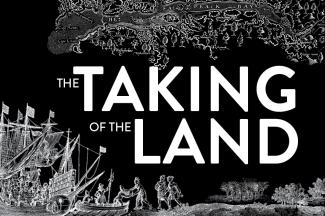
“The Taking of the Land,” on view through June 2022, features exceedingly rare and culturally significant books, maps, documents, and broadsides from the Albert and Shirley Small Special Collections Library and challenges the four-hundred-year-old narrative that English colonists, seeking new lives in a new world, discovered land that was mostly unoccupied — and that the taking was righteous and justified.
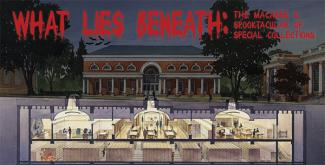
Curated by the Small Special Collections Library’s Reference Team, the exhibition takes a deeper dive into the closed catacombs of UVA’s archival nether world. Leaving no page unturned or manuscript box unopened, they have ferreted out the most frightening and ghoulish collections.
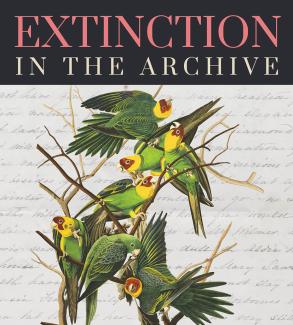
We are living in the midst of Earth's sixth mass extinction event. The ongoing loss of biodiversity is hard to see in our daily lives. This exhibition documents extinction’s emergence in unexpected places and reveals the signs of extinction that surround us—from menus to fashion, botanical prints to children's books.
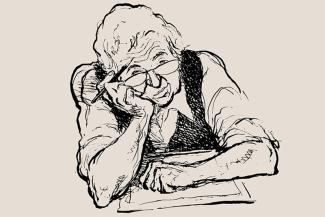
Celebrating the recent acquisition of editorial cartoonist Patrick Oliphant’s voluminous archive.
September 23, 2019 - May 30, 2020
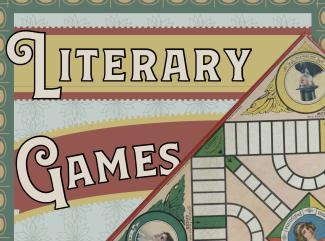
Featuring board, card, and trivia games inspired by literature that celebrate beloved authors, capitalize on the popularity of a particular book at a particular time, allow readers to live in the world of their favorite book, and inspire community in readership.
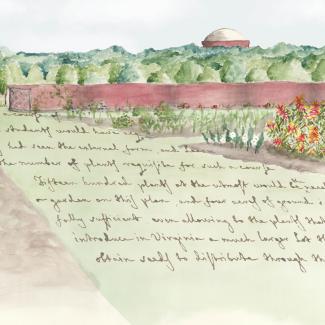
An exhibition tracing the origins of the University’s as yet unrealized botanical garden—intended by Thomas Jefferson for the slope behind Alderman Library and adjacent Nameless Field—and celebrating the splendid gift of Joel B. Gardner (Col ’70, Law ’74) of the Abbé Correia’s original manuscript plan.
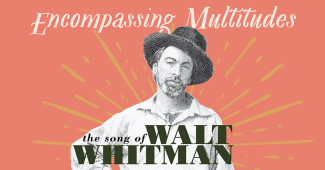
Celebrating the 200th anniversary of the birth of Walt Whitman, the exhibition pays tribute to the incalculable cultural influence of the great American poet through display of first printings of his immortal work, Leaves of Grass, early drafts of his poems in manuscript, personal correspondence, and photographs.

After nearly a century, everything first published in 1923 has finally ascended to the public domain and is free for all to use and share. An exhibition by the UVA Library tells the story of copyright, from Jefferson to how 1923 got free, and what took so long.

A Black History Month 2019 exhibition of select anonymous and familiar African-American images from the Albert and Shirley Small Special Collections Library. Individually and collectively, these faces are of those whose ordinary or extraordinary achievements for themselves and their communities shaped a nation.

More than two centuries after Thomas Jefferson’s 1785 publication of Notes on the State of Virginia, artist Suzanne Stryk traveled the Commonwealth to create her own “notes” inspired by Jefferson but from her individual, twenty-first century point of view. Over two dozen “place-based assemblages” document the unique natural beauty of Virginia. On view through December 21, 2018 in the First Floor Gallery of Harrison/Small.
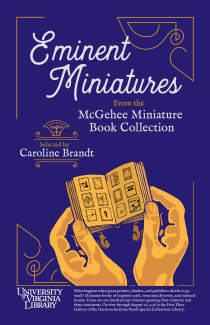
What happens when great printers, binders, and publishers decide to go small? Miniature books of exquisite craft, structural diversity, and outsized beauty. Come see one hundred tiny volumes spanning four centuries and three continents. Coincides with the 2018 Miniature Book Society Grand Conclave in Charlottesville, Virginia.

Highlights from the Claude Moore Health Sciences Library and the Eleanor Crowder Bjoring Center for Nursing Historical Inquiry featuring the history of scientific accomplishment, patient care, social transformation, and technological evolution at UVA.

Ever since his untimely death at 17, Thomas Chatterton (1752-1770) has been one of England’s most fascinating literary figures. His “Rowley Poems”— pseudo-medieval poetry presented as the work of a 15th-century priest—is one of the most famous of all literary hoaxes. That England’s leading men of letters were so unprepared to expose it spurred important advances in textual scholarship. Yet underpinning Chatterton’s forgery was prodigious literary talent, tragically silenced by his presumed suicide. Such credentials made Chatterton irresistible to the Romantics and Pre-Raphaelites, who mythologized him in their own poetry, and Chatterton continues to inspire artists intrigued by issues of literary authenticity and invention. This exhibition traces Chatterton’s career and enduring influence through items from a major new acquisition.
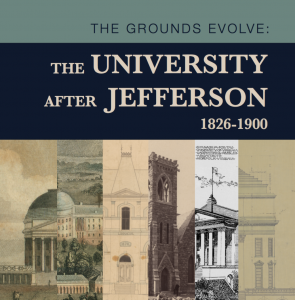
Thomas Jefferson conceived the University of Virginia between 1814 and 1826 as a village, a self-contained unit with a total population of approximately 400. The University’s architecture from that period uniquely represented the essential ideals of Jefferson’s educational and political philosophies and served as an integral part of the students’ education.
The University changed dramatically between 1825 and 1895. A growing student body, disease and war, and developments in teaching methods required buildings to serve new needs. Explore the evolving aesthetic of the University’s architecture from Jeffersonian classicism to a picturesque placement of buildings in a wider range of styles in a new exhibition curated by Richard Guy Wilson, Commonwealth Professor of Architectural History, and in conjunction with the Fralin Museum of Art’s Bicentennial exhibition From the Grounds Up: Thomas Jefferson’s Architecture & Design.

How did readers annotate, mark, and customize their books in an age when the book was king? And what are we to make of those unique volumes now? The Book Traces project is an attempt to answer those questions by looking at individual copies of 19th and early 20th-century books on the shelves of libraries. Over the past two years, here at the University of Virginia, the Book Traces team has examined over 100,000 books from Alderman and other libraries on Grounds, looking for evidence of use by their original owners. This exhibition offers highlights from that search.
In these books, we find that readers left behind many traces of themselves and their interactions: inscriptions, notes, lists, poems, anecdotes, letters, flowers, locks of hair, drawings, and photographs. And these in turn bear evidence of the full catastrophe of our human compulsions, triumphs, and bereavements: courtship, marriage, war, childbirth, aspiration, friendship, and death, all in dialogue with reading and the life of the book.
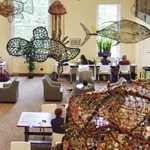
The exhibition, presented in partnership with the Kluge-Ruhe Aboriginal Art Collection, highlights the ecological disaster created by abandoned and discarded fishing nets off the coast of northeastern Australia. These “ghost nets” are a by-product of the commercial fishing industry: ghost nets drift on the ocean currents, trapping a rich array of marine life and eventually drifting to the ocean floor, suffocating marine animals and coral reefs and creating long term damage to the marine environment. Indigenous Australians were among the first to notice the devastating effects of ghost nets. Aboriginal artists from Pormpuraaw, Queensland, harvest ghost nets and turn them into delightful sculptures of marine life. Their artworks raise awareness about the environmental threat of litter in the ocean.
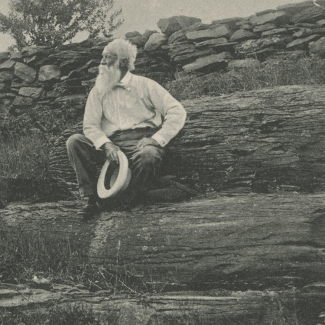
Inspired by the recent conservation treatment of a portrait of Burroughs painted by Orlando Rouland, this exhibition brings an important American naturalist back to light. The painting serves as the focal point of the exhibition, tying together writer, artist, collector, and library. The exhibition showcases books, manuscripts, and other materials from the Burroughs collection. John Burroughs’ (1837-1921) essays on nature were widely read by both scholars and the reading public during his lifetime. He counted among his friends prominent men including Walt Whitman, Theodore Roosevelt, Henry Ford, John Muir, and Thomas Edison. The Burroughs collection is part of the Clifton Waller Barrett Library of American Literature at the University of Virginia.
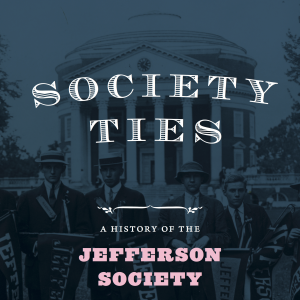
As the University of Virginia's oldest student organization, the Jefferson Literary and Debating Society counts the likes of 28th President of the United States Woodrow Wilson and author Edgar Allan Poe among its members. Today, nearly two centuries after its founding on July 14, 1825, the Jefferson Society remains one of the largest and most active organizations on Grounds. This exhibition, curated by authors Thomas Howard and Owen Gallogly, adapts portions of Society Ties, the recently-released history of the Jefferson Society and student life at UVA.
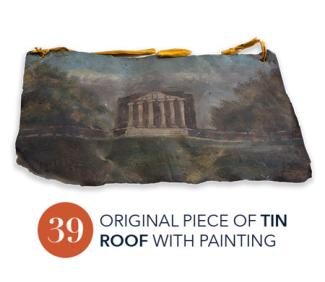
The University of Virginia in 100 Objects, a Bicentennial exhibition celebrating the history of the University was on display August 2017 - June 2018.
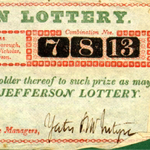
"Thomas Jefferson Revealed" is an mini-exhibition of spectacular treasures pertaining to Jefferson, all drawn from the collections of the University of Virginia Library. Items include a ticket from the "Jefferson Lottery," a letter from Jefferson to Maria Cosgrove, one of Jefferson's engraved calling cards, and even a lock of his hair.
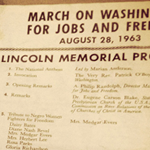
Racism and discrimination, traditionally oppressive institutions in American history and culture, were challenged by the Civil Rights Movement (1945-1970). The "Jim Crow" system remained in place for nearly seventy years, until the landmark 1954 Brown v. Board of Education decision re-energized equal rights activism. This exhibition highlights local, state and national Civil Rights events through selected legislation, letters, reports, speeches, and photographs from the University of Virginia Library, and the papers of individuals and organizations at the Albert and Shirley Small Special Collections Library.

